As Founder and Chief Experience Officer of Livit Design, Ben Calleja has both a bird’s-eye view of the global restaurant industry and ground-level insights into what it takes for a modern restaurant brand to succeed. Having designed 14,000 restaurant experiences in 45 countries, Livit has a pretty good idea of what's going on in a wide range of international markets—like Saudi Arabia, where it’s currently working on a massive urban project called NEOM.
“We're designing a building that's hosting nine million people, basically taking the whole of Manhattan’s square footage into one building and creating the future of hospitality and the future of restaurants,” Calleja said of the project in a recent presentation at RestaurantSpaces in Miami Beach. “It’s really happening.”
Drawing on Livit’s work around the world these last few years, Calleja unpacked some of the latest trends shaping the global food and beverage industry, from the return of design-first concepts to the rise of artificial intelligence.
Design Is Back
One of the most important developments of the last year is the primacy of design—at least in international markets. “Design is back,” Calleja said. “We still haven't seen it this much here [in the U.S.], but it's coming. Guests want to get back and have physical experiences.”
What this means for design-driven brands, of course, is tremendous growth potential. Look no further than Luckin Coffee for an example: the Beijing-founded chain has opened 9,000 stores in China over the past six years, a striking lead over McDonald’s' 5,700 units and Subway’s' 700. The growing chain also recently overtook Starbucks as the top-earning coffee chain in China.
As for global brands making domestic headway, the German coffeehouse Coffee Fellows has opened twice the number of units in the US as Starbucks has opened in Germany. Other brands soon to expand their US footprint include Nene Chicken, Pelicana, and PDQ, which currently operate 1,600, 3,000, and 3,500 units respectively.
“These are big companies, big chains with deep pockets, and all of them are already in the US,” Calleja said. “The expansion plans for many of our clients are 3,000, 4,000, 5,000 stores, and they have the capital to do it.”
This trend is driven by design-driven brands that use the physical environment to deliver elevated customer experiences—even in fast-casual settings, like La Felicitá in Paris: an expansive Italian food court that unites five kitchens under one concept. The restaurant/market is the brainchild of Big Mamma Group, which was recently acquired by McWin Capital Partners with a $330 million valuation.
Six Concepts, One Kitchen
Another trend on the rise is co-branding, in which multiple restaurants share the same space. As with the Applebees/IHOP concept that Livit designed for a client in Dubai, the approach allows brands to serve different day parts and make the most of their physical spaces. “Ultimately you're paying rent 24 hours a day,” Calleja said. “You have your team members there. Why not maximize the use of them?”
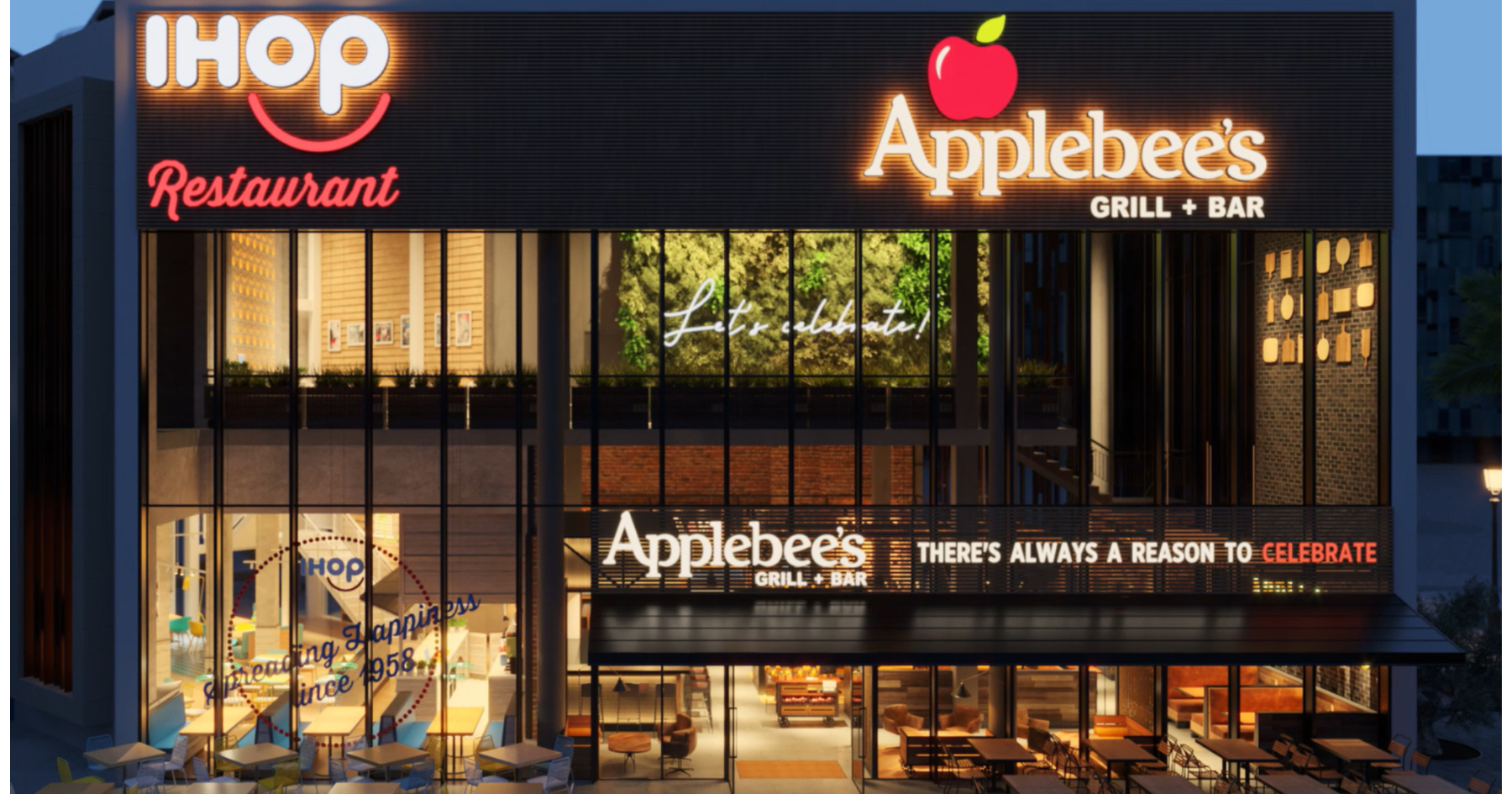 The co-branded Applebee's/IHOP location unveiled in Dubai earlier this year
The co-branded Applebee's/IHOP location unveiled in Dubai earlier this year
In one recent co-branding venture, Livit transformed a 6,200-square-foot Denny’s location into a fast-casual unit with six concepts sharing a single kitchen. “For the guests, they're completely individual brands with individual storefronts,” Calleja explained. “But for the operations, it's just one kitchen. One back-of-house really serves all the different concepts out there. We think this is a trend that's gonna grow, it's a great way of maximizing usage of existing large assets.”
Co-branding has even reached the fine dining space. As Calleja pointed out, the popular London restaurant Sketch is in fact three restaurants under a single roof—one of which has three Michelin stars.
The Transformative Potential of Artificial Intelligence
Advancements in artificial intelligence have already begun to impact the restaurant industry, and that’s just the tip of the iceberg. As Calleja argued, AI has the potential to completely transform the design process.
“We are going into a future where we're not designing anymore with CAD and drawings and computers,” he predicted. “We are going to talk to computers for them to design our spaces.”
In a similar vein, virtual reality will give operators the ability to explore potential redesigns on the fly, mapping new design elements onto video of existing spaces. “We can film a restaurant and see what it would look if we changed the bar in a video and show that to a franchisee, or show it to a partner without needing to do renderings or visualization or anything like that,” he said. “You can change that in seconds.”
AI is also taking in-restaurant experiences to a new level. Calleja mentioned a new restaurant in Dubai adorned with giant screens that display generative art. Thanks to the use of motion sensors, the imagery changes depending on the behavior of guests in the restaurant.
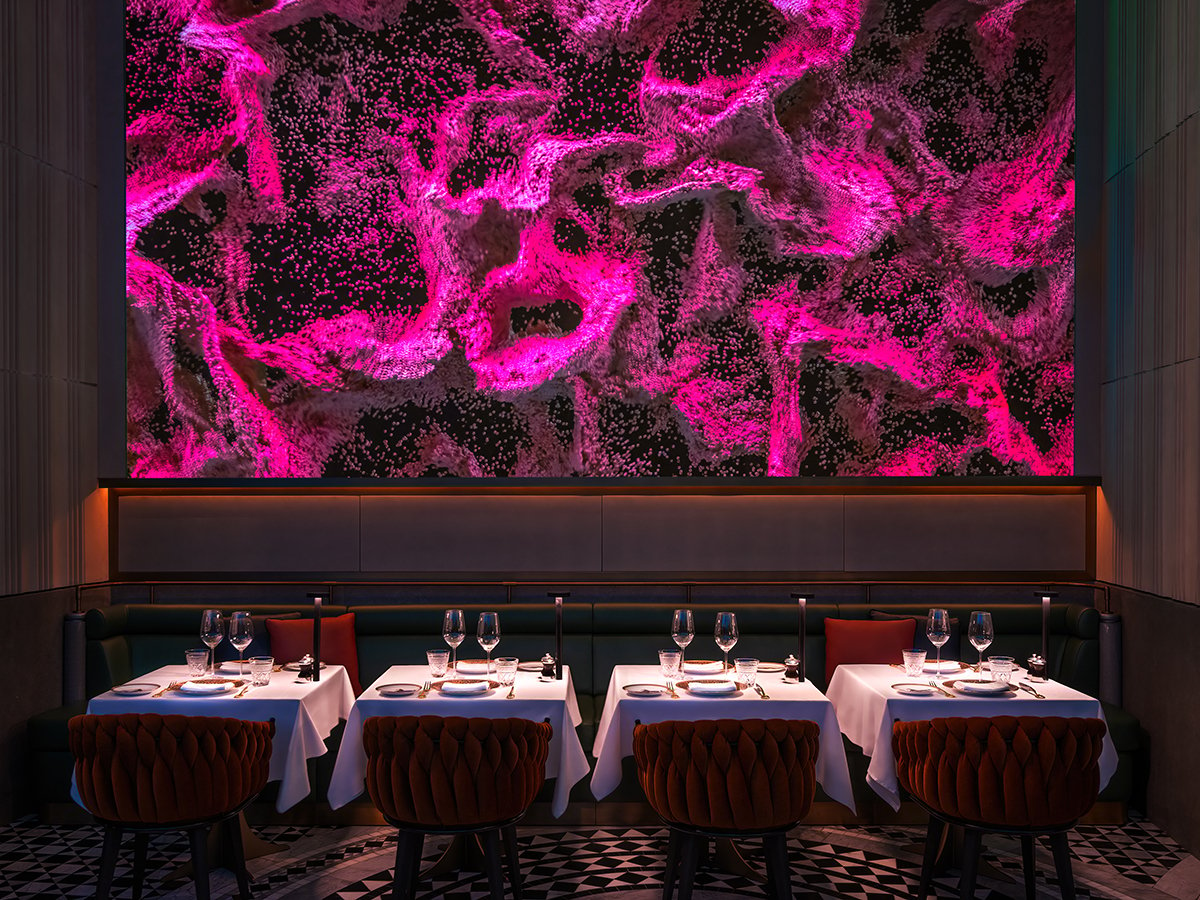 In-restaurant AI-generated imagery that changes based on guest behavior is gaining popularity overseas
In-restaurant AI-generated imagery that changes based on guest behavior is gaining popularity overseas
AI tools can also streamline operations in powerful ways. Livit is currently working with a company called Tastewise that uses AI to conduct highly precise market research, tracking the penetration of individual menu offerings and even ingredients.
“We can see the number of restaurants that have it, how much they're charging for it, and what the menu growth is” for something as specific as cauliflower or sprouts, Calleja explained. These insights help operators identify what customers are interested in and how much they’re willing to pay for it.
“The same goes with beverage platforms,” he added. “AI now can recognize 600,000 wines and do wine pairings depending on the components and chemical products of your ingredients and your recipes. This has just started. This is going to get better and smarter as it learns.”
More Robots, More Humanity
One of the many promises of a fourth trend, automated kitchen technology, is to reduce the need for certain repetitive back-of-house functions, freeing up workers to focus on what humans do best.
“None of our team members love to do inventory in an Excel sheet or go into the walk-ins and scan things; computers are much better at doing those kinds of things,” Calleja said. “We're really good at hospitality. I always say that all technology should actually enhance hospitality.”
Robotic kitchen technology not only has the potential to slash labor costs, he added, but also to reduce food waste and improve order accuracy. He described one automated kitchen that prepares 15,000 dishes per day, even cleaning itself and creating spices.
“What's really interesting is that consumers in this restaurant can choose their flavor profile, their spice, and completely customize everything in the recipe,” he said. “Every dish has a QR code and RFID, so you can go into any of the restaurants of this company and actually get exactly your recipe every time.”
Calleja stressed that leveraging these sorts of technologies doesn’t necessarily require building out a completely new kitchen facility. Instead, brands can work with companies like Nala Robotics to retrofit existing facilities with automated chefs.
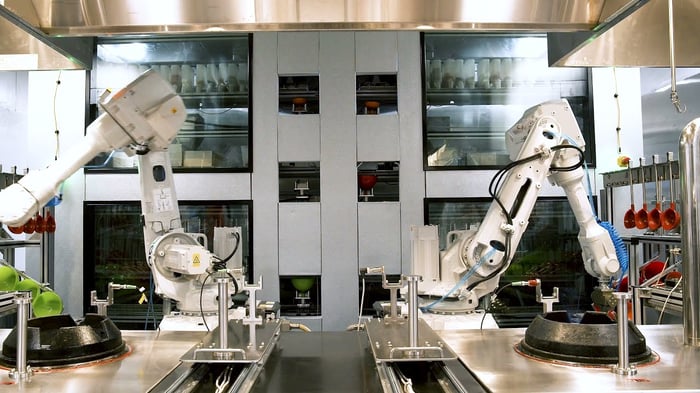
Nala Robotics is the world's first AI-enabled fully-automated robotic kitchen
“Basically you can put them in any kitchen and they mimic human movements and human interactions,” he explained. “They replicate to perfection. It roughly takes 48 hours for this equipment to get the recipes absolutely right. And once they do it, it's forever, you don't have to change anything. That sort of accuracy is something that humans are not good at.”
As he wrapped up his presentation, Calleja reminded the audience not to lose their passion for innovation.
“As designers, as creative developers, you cannot untie these things: the consumer experience and the technology and the way we work are the same, forever,” he concluded. “This is not gonna change, at least not in a lifetime.”

Posted by
Chain Restaurants Reimagined.
The Retreat to Reimagine Restaurant Development, Design + Technology.
April 12-14, 2026 | Miami, FL



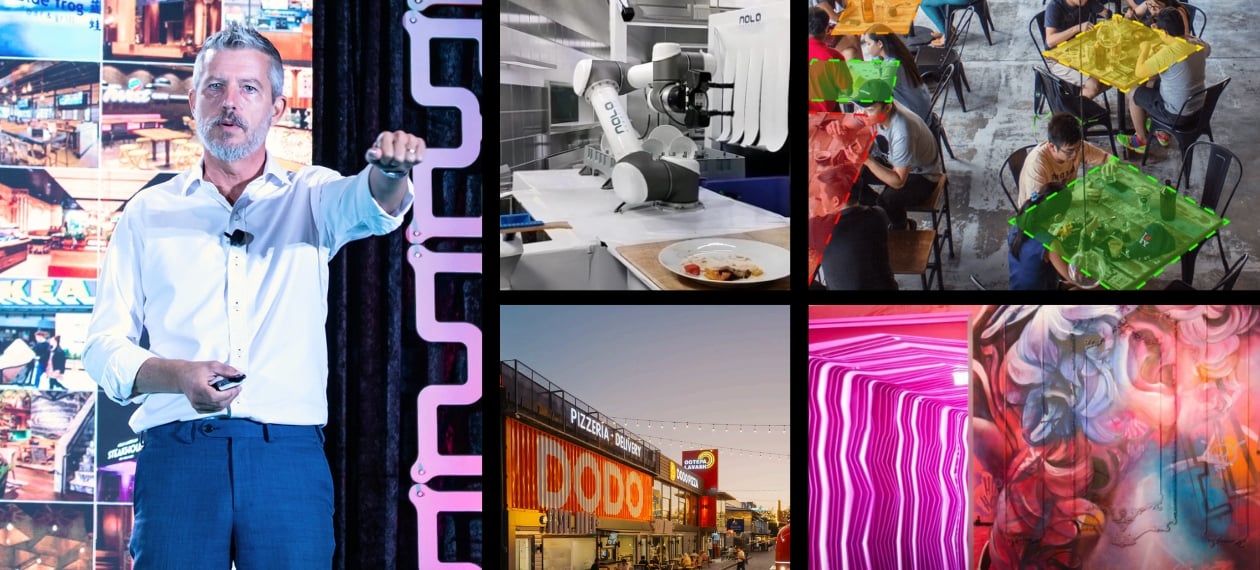


-3.png)
-4.png)
-3.png)
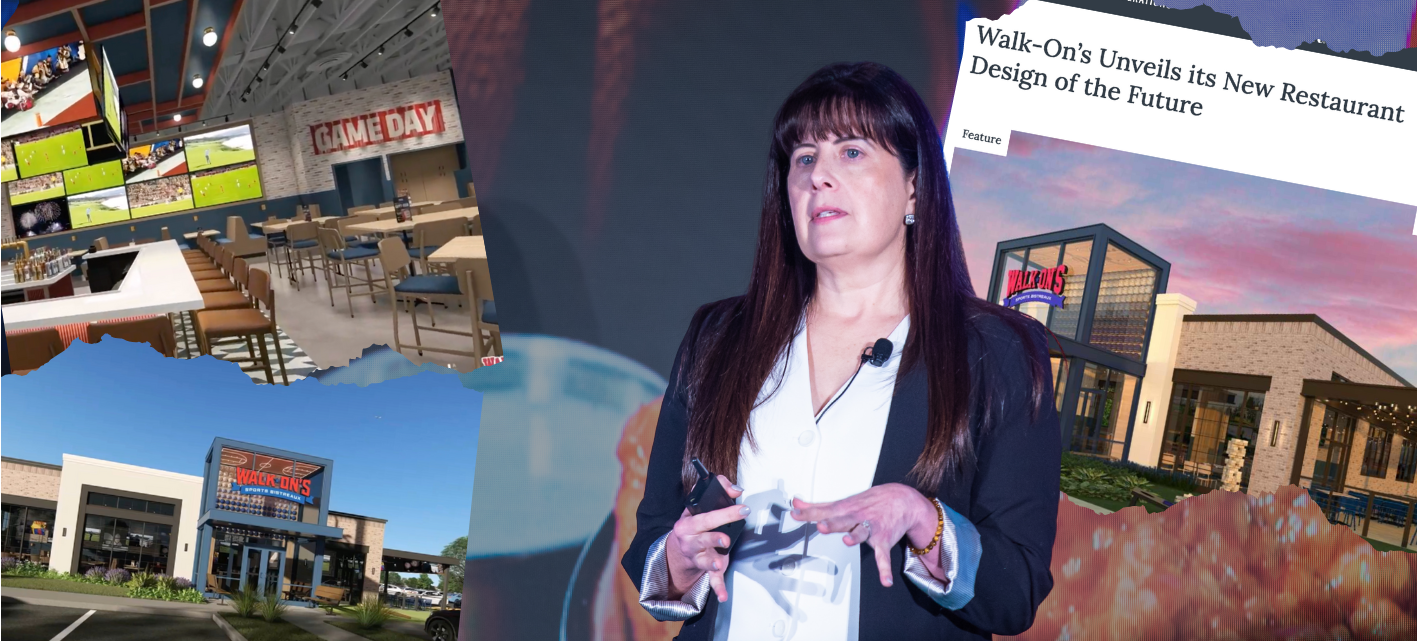

Comments